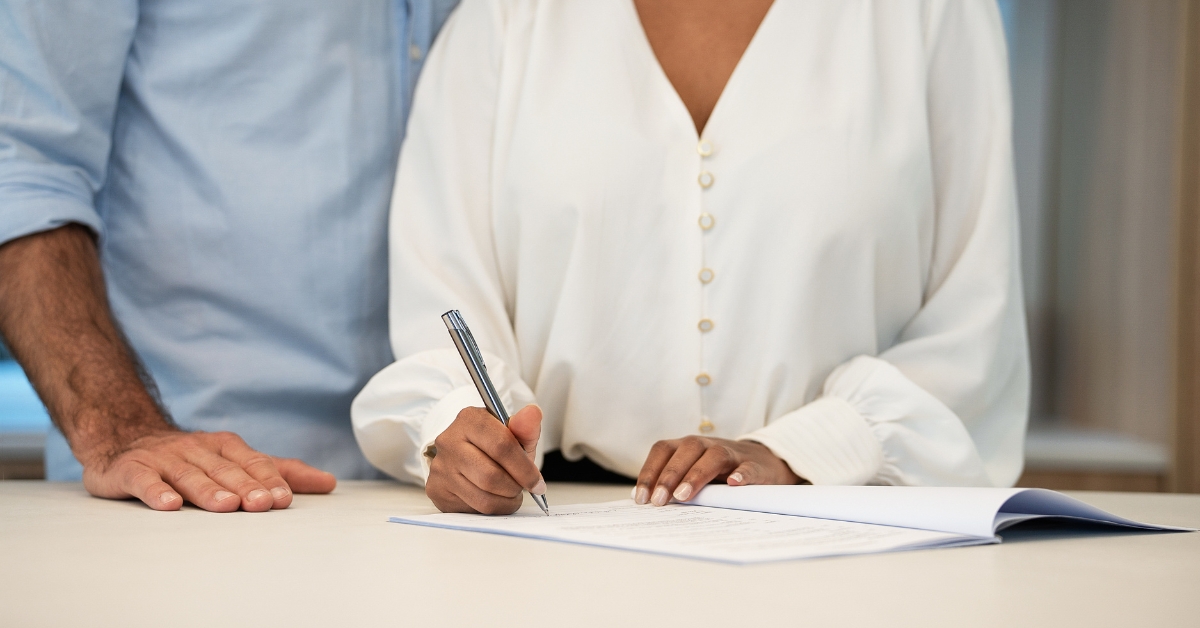Renting Real Estate in Victoria

When you aren't ready to buy a home in Victoria, or perhaps simply want to rent in the city after buying in the country, you'll deal with the tenancy process. While the more fluid nature of renting affords people a greater level of freedom, there is still a lot of paperwork and due process to work through before you can move into a rental property.
Let's start by going over the basics of what you need to start a tenancy in Victoria.
Where to look for a rental property in Victoria
What do you need to rent in Victoria?
First things first, you will need to find a place where you want to rent property in Victoria. A real estate agent such as LJ Hooker can be useful for giving you access to a database of properties, and Gumtree can also be useful. At LJ Hooker, we have a range of properties across Victoria, so come on in and take a look at what we have to offer.
When it comes to actually viewing properties, you might need to provide identification and a phone number, and sometimes even a deposit (up to $100) if you require to pick up a key to view a rental. Sometimes you will also have to provide proof of your income, to ensure that you can pay the rent. Consumer Affairs Victoria has an extensive set of resources for helping you prepare an application.
Doing the inspection right
When you get to viewing a rental property, this is your first big chance to get a real feel of your potential home. You should go over water pressure, lighting, seeing the home at different times of day (if possible), noise levels, security systems, and existing furniture / whiteware and its general condition.
If you decide a rental is the one for you and get accepted to move in, you'll have to complete the new tenant checklist, which includes an inventory of everything in the home and what condition it is in. This will be crucial for getting your bond back and addressing any disputes regarding damage or wear and tear to the property over time.
Applying for a rental property in Victoria
How to become a tenant in Victoria
When applying for a tenancy in Victoria, it's not only your identity and income that you'll have to prove. You'll also have to give references from previous tenancies, which can be difficult if this is your first time renting.
Consumer Affairs Victoria are the regulating authority when it comes to renting in the state. They'll mediate any disputes, issues or complaints that arise, and have a web page dedicated solely to the Victorian renter.
The new tenant checklist
The same association have developed a handy new tenant checklist, which you should certainly take a look at before signing the official agreement. It details everything that you need to know before you move in, so print it off and work through it to put yourself in a good spot.
Additionally, you should also collate the following:
- A bond lodgment form
- The aforementioned checklist
- The tenancy agreement
- Two copies of the condition report
- Any repairs that will be made by the landlord, in writing
If you don't have any of these items don't sign the residential tenancy agreement just yet. This is because it's a legally binding contract, and you don't want to be locked into something that you don't fully understand - it can be expensive and mentally stressful, otherwise.
The costs of Victoria rental property
Paying bond and rent in advance is usually the biggest financial impost in the renting process. In Victoria, you do not have to pay more than one month's rent if a home costs less than $350 per week. The Victorian Civil and Administrative Tribunal has a handy rent calculator, and is also a good resource if you have any disputes with your landlord or property manager.
There are also costs that you are not accountable for. These include getting keys or swipe cards for each tenant named on the agreement, and any costs that come with setting up bonds or paperwork.
Once you have paid your bond and the paperwork is lodged, the Residential Tenancies Bond Authority is where you can check up on the details of this sum.
There are several other costs that you must cover as a tenant in Victoria. These may include:
- A holding fee, which will secure the property for you.
- A refundable fee to secure keys for a viewing - not always applicable, but be prepared for it.
- Extra keys/swipe cards will be purchased at your expense.
- Setup fees for utilities (electricity, water and power).
- Insurance or legal requirements stipulated in the tenancy agreement.
Condition report
When signing the tenancy agreement, be sure to bear in mind the condition report that should come with it. This document outlines the overall state of the property, so it's vital that you fill it out correctly when carrying out an initial inspection. The condition report is key to getting your bond back, as you can use it to show that any prior damage was done before you moved in.
In Victoria, two copies of the condition report must exist - one for you and one for the landlord/letting agency. Scan it over one more time, providing photographs for evidence if need be. The condition report should also outline any repairs that need to be made by the landlord, and once signed, becomes a binding contract.
See Consumer Affairs Victoria for more information on this important document.
Signing the tenancy agreement
There are two types of tenancy agreement in Victoria, each specifying a different kind of stay.
Fixed term
The fixed term is for a set length of time, normally around six months to a year. Once the lease expires, it's up to the tenant to sign a new contract, leave, or move on to a periodic lease.
Periodic lease
Also known as a 'month-by-month' lease, the periodic lease is the natural progression from the fixed term contract. A rolling contract, the tenant is still bound by the same rules and regulations of a fixed term agreement, but doesn't have to sign a new contract, though they risk their tenancy in this case.
Reading the fine print
The rental contract, or tenancy agreement, is probably the most important document for Victorian rental real estate. It outlines the duration of your stay, how much you will pay, and any conditions on your residency - for example, whether you can smoke or own pets on the property.
It will also outline the landlord's responsibilities. For example, if there are any appliances to be replaced, or if they will be responsible for keeping the garden tidy. This can stem directly from your inspection of the condition of the home, highlighting the importance of a keen eye for detail. Consumer Affairs Victoria has an extensive list of what should be included in your tenancy agreement.
You can even work out the nuts and bolts of your rental situation from the comfort of your own smartphone. There is a RentRight app that can help you work out how much you will pay over the course of a week, a month, or even a year.
Renting in Victoria presents its own set of challenges, but with these resources you can find yourself in a great home with minimal effort - contact the expert team at LJ Hooker to find out more.
DISCLAIMER - The information provided is for guidance and informational purposes only and does not replace independent business, legal and financial advice which we strongly recommend. Whilst the information is considered true and correct at the date of publication, changes in circumstances after the time of publication may impact the accuracy of the information provided. LJ Hooker will not accept responsibility or liability for any reliance on the blog information, including but not limited to, the accuracy, currency or completeness of any information or links.



.jpg)